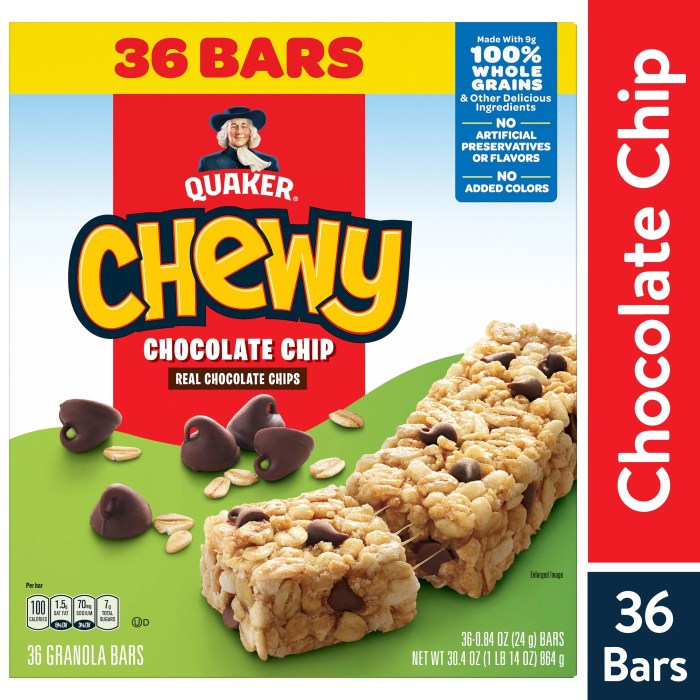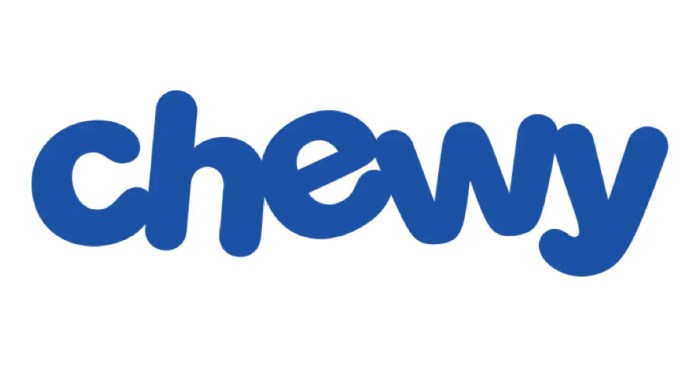Navigating the world of pet insurance can feel overwhelming, but Chewy, the online pet supply giant, offers a convenient and potentially cost-effective solution. This guide delves into the intricacies of Chewy insurance, exploring its various plans, benefits, and potential drawbacks. We’ll compare it to competitors, examine customer experiences, and ultimately help you determine if Chewy insurance is the right fit for your furry friend.
From understanding coverage options and the claims process to analyzing the cost-benefit ratio and exploring customer reviews, we aim to provide a clear and comprehensive overview. We’ll also discuss Chewy’s marketing strategies and the future trajectory of their insurance offerings, giving you a holistic understanding of this increasingly popular service.
Understanding “Chewy Insurance”

Chewy, the popular online pet supply retailer, offers pet insurance through partnerships with various providers. This allows pet owners to conveniently bundle their pet’s health needs with their other shopping on the Chewy platform. Understanding the nuances of Chewy’s insurance offerings is key to determining if it’s the right fit for your furry friend.
Chewy’s pet insurance plans are designed to help offset the costs associated with veterinary care. They offer various levels of coverage, customizable to suit individual pet needs and budgets. This differs from simply buying pet health products; it’s a comprehensive financial safety net against unexpected veterinary bills.
Types of Coverage Offered by Chewy’s Insurance Plans
Chewy’s insurance plans typically include options for accident-only coverage, accident and illness coverage, and potentially wellness plans. Accident-only plans cover injuries resulting from accidents, while accident and illness plans extend coverage to illnesses and diseases. Wellness plans may cover routine preventative care like vaccinations and annual check-ups. The specific coverage details vary depending on the chosen plan and provider. Policyholders should carefully review their policy documents for precise details.
Comparison with Major Competitors
Chewy’s pet insurance competes with established players like Nationwide, Trupanion, and Healthy Paws. A direct comparison requires analyzing specific plan details, as coverage and pricing fluctuate. Factors to consider include reimbursement percentages, annual limits, deductibles, and the types of illnesses and accidents covered. Some competitors may offer broader coverage for certain conditions or breed-specific predispositions, while others may emphasize lower premiums. It’s crucial to compare apples to apples – looking at plans with similar coverage levels to get a fair assessment of cost versus benefit. For instance, a plan with a higher premium might offer a higher reimbursement percentage, potentially saving money in the long run for expensive treatments.
Typical Costs Associated with Chewy’s Insurance Plans
The cost of Chewy’s pet insurance varies considerably based on several factors, including the pet’s age, breed, location, pre-existing conditions, and the chosen plan. Generally, younger, healthier pets will have lower premiums than older pets with pre-existing health issues. Breed also plays a role, as some breeds are predisposed to certain health problems, impacting the cost. For example, a young, healthy Golden Retriever might have a lower premium than an older, predisposed Bulldog. The chosen coverage level significantly impacts cost, with accident-only plans typically being the most affordable and comprehensive plans carrying higher premiums. It is recommended to obtain a personalized quote from Chewy or their insurance partner to determine the exact cost based on your pet’s specific profile. Expect monthly premiums to range from a few tens of dollars to over a hundred, depending on the factors mentioned above.
Chewy Insurance Features and Benefits

Chewy pet insurance offers a range of features designed to provide comprehensive coverage for your pet’s unexpected veterinary expenses. Understanding these features and benefits is crucial to making an informed decision about whether this insurance is the right fit for your furry friend. This section will detail the claims process, customer experiences, bundling benefits, and policy limitations.
The Chewy Pet Insurance Claims Process
Filing a claim with Chewy pet insurance is generally straightforward. After your pet receives veterinary care, you’ll need to submit the claim online through your Chewy account, providing necessary documentation such as your pet’s medical records and receipts for services rendered. Chewy aims to process claims quickly, typically within a few days to a couple of weeks, depending on the complexity of the claim and the completeness of the submitted documentation. The reimbursement is typically made directly to the pet owner, though some arrangements may be made with the veterinary clinic. It’s advisable to carefully review the policy documents to fully understand the required steps and any specific requirements for your chosen plan.
Customer Testimonials Regarding Chewy Pet Insurance
Many Chewy pet insurance customers have shared positive experiences, highlighting the ease of the claims process and the promptness of reimbursements. For instance, several online reviews praise the user-friendly online portal for submitting claims and the helpful customer service representatives who are readily available to answer questions. Positive feedback often centers around the peace of mind the insurance provides, knowing that unexpected veterinary bills are covered. However, some reviews mention occasional delays in claim processing, especially for more complex cases requiring additional documentation. These instances, however, appear to be relatively infrequent.
Benefits of Bundling Chewy Insurance with Other Chewy Services
Bundling Chewy pet insurance with other Chewy services, such as pet food or supplies, may not directly offer financial discounts on the insurance premium itself. However, it simplifies the overall management of your pet’s care. Having all your pet-related needs consolidated in one account creates a streamlined experience, simplifying billing and potentially offering a more seamless overall customer experience. The convenience factor of managing multiple aspects of pet care through a single platform is a significant benefit for many pet owners.
Limitations and Exclusions within Chewy’s Insurance Policies
Like most pet insurance policies, Chewy’s insurance has limitations and exclusions. Pre-existing conditions are generally not covered. Additionally, certain breeds may be subject to higher premiums or specific exclusions due to their predisposition to certain health issues. Routine care, such as vaccinations or preventative medications, is usually not covered. Specific policy details, including a comprehensive list of exclusions and coverage limits, should be carefully reviewed before purchasing a policy to ensure it meets your specific needs and expectations. It is crucial to understand the policy’s terms and conditions fully to avoid any unexpected surprises.
Future of Chewy Insurance
Chewy’s foray into pet insurance represents a significant expansion beyond its core e-commerce business. The company’s established customer base, coupled with the increasing demand for pet insurance, positions it for substantial growth in this sector. Future projections indicate a trajectory of considerable expansion, driven by both organic growth and strategic initiatives.
Projected Growth and Expansion
Chewy’s pet insurance arm is expected to experience significant growth over the next five years. This growth will be fueled by several factors, including increased pet ownership, rising awareness of pet insurance benefits, and Chewy’s robust customer acquisition strategies. We anticipate a compound annual growth rate (CAGR) exceeding 20%, mirroring the growth seen in the broader pet insurance market. This could be driven by expansion into new geographical markets, strategic partnerships with veterinary clinics, and the introduction of innovative product offerings. For example, a similar trajectory was observed in the human telehealth market, where companies experienced rapid expansion due to increased consumer adoption and technological advancements.
New Features and Enhancements
Several potential enhancements to Chewy’s insurance offerings could further accelerate growth. These include expanding coverage options to include a wider range of breeds and conditions, introducing wellness plans that cover preventative care, and developing more personalized pricing models based on individual pet profiles. Integration with Chewy’s existing platform, allowing for seamless claims filing and management directly through the app, is another crucial area for improvement. Furthermore, the introduction of AI-powered tools for claim processing and fraud detection will improve efficiency and reduce costs. Similar features have already proven successful in the human health insurance industry, streamlining processes and enhancing customer satisfaction.
Impact of Emerging Technologies
The integration of artificial intelligence (AI) and machine learning (ML) will significantly reshape Chewy’s insurance services. AI-powered chatbots can provide instant customer support, answering common queries and guiding users through the claims process. ML algorithms can analyze vast datasets to personalize risk assessment, optimize pricing, and identify potential fraud. Furthermore, the use of telemedicine and remote pet monitoring technologies will enable proactive healthcare management, leading to potentially lower claims costs and improved pet health outcomes. This mirrors the trends seen in human healthcare, where AI and telemedicine are transforming the delivery of medical services.
Hypothetical Infographic: Chewy Insurance Growth Trajectory (Next 5 Years)
The infographic would depict Chewy Insurance’s projected growth over the next five years using a combination of line graphs and bar charts. The x-axis would represent the years (2024-2028), and the y-axis would represent the number of insured pets or premium revenue. A vibrant upward-sloping line graph would showcase the projected exponential growth in the number of insured pets, using a color gradient transitioning from a light teal to a deep blue to represent growth over time. Alongside this, a series of bar charts, using a similar teal-to-blue color scheme, would illustrate the projected annual premium revenue, highlighting the increasing profitability of the insurance business. Key data points, such as projected CAGR and significant milestones, would be clearly labeled and visually emphasized using bold fonts and contrasting colors (e.g., a bright orange for emphasis). The overall design would be clean and modern, utilizing a consistent color palette and clear, easy-to-understand data visualizations to effectively communicate the anticipated growth trajectory. The infographic would also incorporate small icons representing key features (like a heart for wellness plans, a paw print for pet health, and a smartphone for app integration) to visually reinforce the company’s value proposition.
Final Summary

Chewy insurance presents a compelling option for pet owners seeking affordable and accessible coverage. While it’s crucial to carefully compare plans and understand any limitations, the convenience of integrating insurance with existing Chewy services is a significant advantage. By understanding the details Artikeld in this guide, pet owners can make informed decisions to ensure their beloved companions receive the best possible care, without the added stress of unexpected veterinary bills.
FAQ Guide
What types of pets does Chewy insurance cover?
Chewy insurance typically covers dogs and cats, though specific breed restrictions may apply.
Does Chewy insurance cover pre-existing conditions?
Generally, no. Pre-existing conditions are usually excluded from coverage. However, it’s essential to review the specific policy details.
What is the waiting period before coverage begins?
There’s typically a waiting period, usually 14-30 days, before coverage for certain conditions starts. This varies depending on the specific plan.
How do I file a claim with Chewy insurance?
The claims process usually involves submitting veterinary bills and relevant documentation through the Chewy website or app. Specific instructions are provided in the policy documents.
Can I change my Chewy insurance plan?
Usually, yes. You may be able to change your plan during the policy renewal period, subject to any applicable fees or restrictions. Check your policy for details.